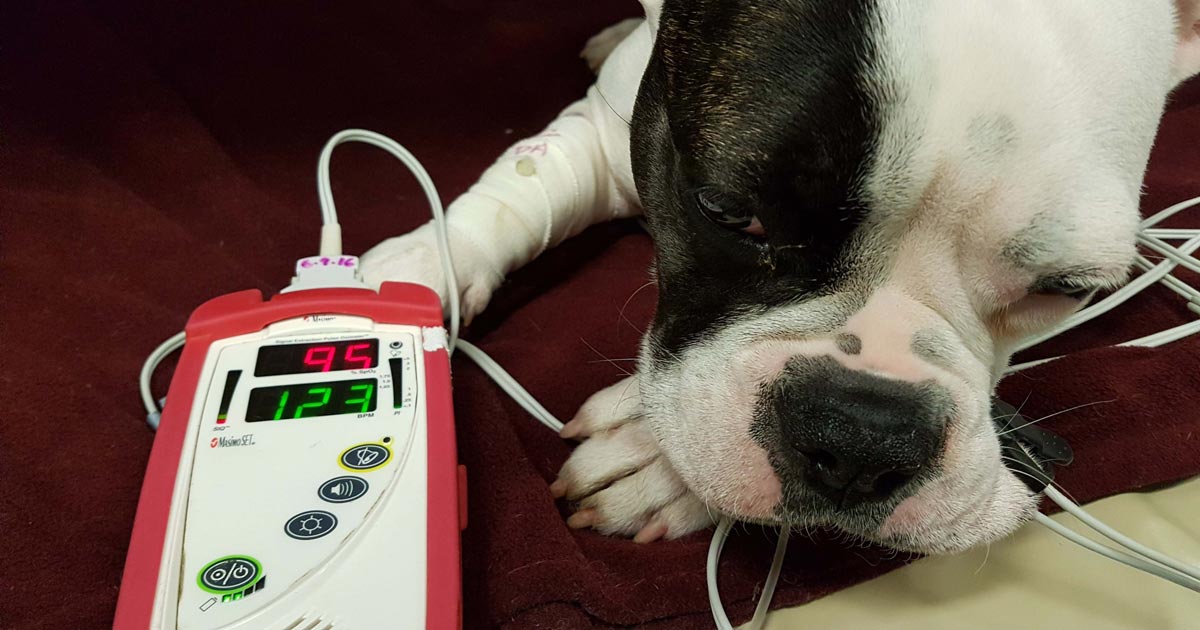Pulse oximetry is a very useful diagnostic and monitoring tool that has become commonplace in veterinary clinics. It measures the percentage of haemoglobin saturated with oxygen, and is an indirect measure of arterial oxygen levels.

However, here are several important points to help you understand the limitations of pulse oximetry.
Causes for false readings
Falsely low readings:
- motion artefact
- peripheral vasoconstriction/low tissue perfusion from hypothermia or shock
- pigmentation of mucous membranes
- thick hair coat
Falsely high readings:
- haemoglobin abnormalities (carboxyhaemoglobin and methaemoglobin, for example)
False sense of security
Pulse oximetry can give us a false sense of security. We hold on to the adage “95% and above means everything is going along swimmingly”, but that couldn’t be further from the truth:

- It does not detect hypoventilation or apnoea: it can take several minutes for apnoea to result in hypoxaemia that is detected on pulse oximetry; therefore, it cannot be used as a sole measure of respiratory adequacy. This is best measured by capnography.
- A common misconception is the oxygen saturation will drop with patients with anaemia. This is incorrect. The haemoglobin present in the decreased number of red blood cells will still be saturated to normal levels. However, this cannot be interpreted as the patient having adequate oxygen delivery to its tissues.
- One last point: due to the oxyhaemoglobin dissociation curve, any drop below 94-95% is significant and warrants investigation. At 95% SpO2 the partial pressure of oxygen in the arterial blood is 80mmHg (normal), but at 90% SpO2 the partial pressure is 60mmHg (severe hypoxaemia) – for only a small percentage decrease, there is an exponential reduction in arterial oxygen content. This is even more important when patients are receiving oxygen therapy as the patient’s SpO2 should be 99-100% normally. So when a patient has an SpO2 of 95%, but is on high rates of oxygen, then significant respiratory compromise/disease must be present for an SpO2 of 95% or lower to occur.

Leave a Reply